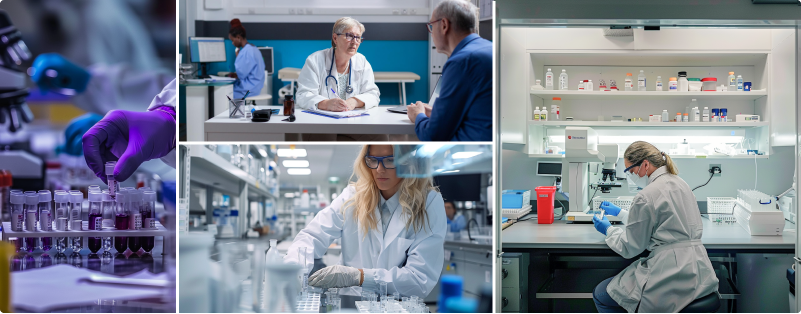Client Overview
This case study examines a leading biotechnology provider that specializes in biospecimens and research solutions within the biotechnology and life sciences sector. This organization supplies human and animal tissues, cells, and various biological materials essential for drug development, diagnostics, and medical research.
Organizational goal
Enhance data management and business intelligence systems for timely decision-making and improved team collaboration.
Challenges Identified
The biotechnology provider faced several challenges:

01
Inefficient Data Management
- Their existing Power BI dashboards were insufficient for their growing data analysis needs, which hindered timely decision-making.
02
Power Apps Security Issues
- Access challenges in Power Apps created vulnerabilities in data management, impacting workflow and user productivity.
03
Inconsistent Reporting
- The absence of a unified semantic model across reports led to discrepancies in data interpretation, complicating collaboration across teams.
04
Lack of Experience with Microsoft Fabric
- While interested in utilizing Microsoft Fabric for its advanced capabilities, the client had no prior experience with this platform, creating a barrier to fully leveraging its potential.
Implemented Solution
To address these challenges, a comprehensive solution was implemented:

01
Power BI Dashboard Development
- A customized Sage Enterprise Intelligence Dashboard was created, enhancing data visualization and reporting capabilities.
02
Power Apps Model Creation
- A sample Power Apps model was developed to demonstrate security roles and address access issues effectively.
03
Semantic Model Utilization
- The same semantic model was applied across multiple reports for the first time, ensuring consistency and accuracy in data reporting.
04
Microsoft Fabric Integration
- Sample models were developed within Microsoft Fabric, allowing them to explore its features and prepare for future scalability.
Observed Outcomes
Following the implementation of the solution, the Biotechnology provider achieved several key results:
Completion of dashboards
- The new Sage Enterprise Intelligence Dashboard improved access to critical data, enabling faster and more informed decision-making.
Strengthened Security Protocols
- Clear definitions of user roles in the Power Apps model improved security and resolved previous access issues.
Consistent Reporting
- The use of a unified semantic model reduced errors and streamlined the reporting process, enhancing collaboration across teams.
Familiarity with Microsoft Fabric
- The organization gained hands-on experience with Microsoft Fabric, setting the stage for future advancements in data analytics.
Conclusion
The comprehensive solution provided to the Biotechnology provider successfully addressed their critical challenges, enhancing their business intelligence capabilities and data management processes. By leveraging Power BI, Power Apps, and Microsoft Fabric, the biotechnology company is now better equipped to meet the demands of their sector. These improvements have not only streamlined their operations but also positioned the company for future growth and innovation in research and development.
